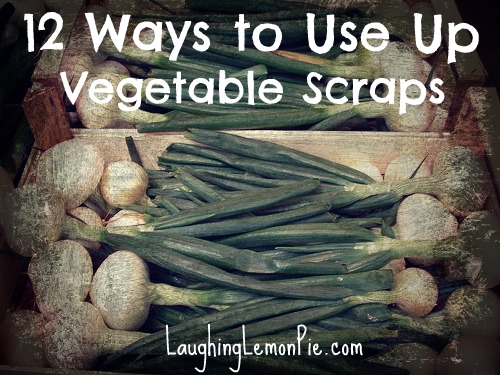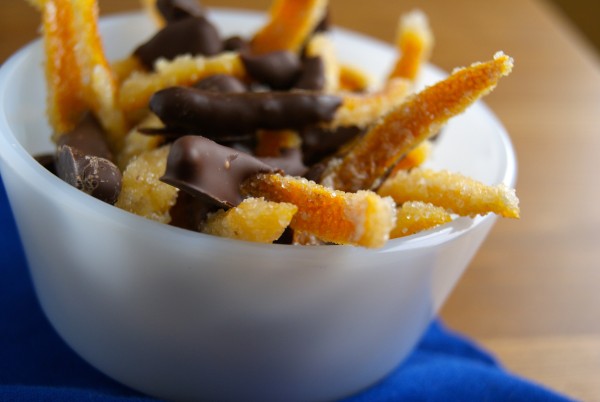I’m challenging myself to eat more sustainably over the next year—and documenting the steps I take in this series, inspired by an article in the Jul/Aug 2010 issue of Whole Living Magazine.
Local, organic, free-range, rainforest certified, antibiotic-free—it can get really confusing out there in food land when you’re trying to make the best possible food choices. As I have become a more educated consumer, it’s no longer a question of just going to the grocery store to pick up some food. Now I have to consider all sorts of things about each product I want to buy: Where did it come from? What happened to it on the way here? How was it grown? How was it harvested? What else is in it?
With big-Ag companies hopping on the organic bandwagon, it’s no longer sufficient to just buy organic. Whether you decide to buy a national organic brand or not, I believe understanding what you’re buying is paramount.
I believe in voting with my fork and with my dollars, and so I’m trying very hard to learn to eat more sustainably. So, over the next year, I plan to try to focus on eating sustainably at home, and share the process with you.
This whole experiment has been inspired by an article entitled, “50 Ways to Eat Sustainably” from a 2010 issue of Whole Living Magazine. And No. 1 on that list is…
Use up vegetable scraps
Recently, I had the distinct pleasure of taking a farmer’s market tour and cooking class with Mary Collette Rogers of Everyday Good Eating. Mary Colette bills herself as a kitchen coach, with a mission to educate people about all the mechanics of cooking—not just how to follow a recipe.
Her farmer’s market cooking classes are designed to take guests on a walking tour of the wonderful Boulder Farmer’s Market, where she picks up goodies from local farmers for a simple supper. Then the group heads back to a kitchen where she shares ideas and techniques for preparing the bounty through a hands-on cooking class.
I absolutely loved the composed salad with poached chicken and beet relish that we made, but the bigger takeaway for me was something Mary Collette said as we were chopping the beets and onions.

As we prepared the veggies, she tucked the vegetable scraps—the beet greens, spinach stems, and onion tops—away into her bag. These would be used by her family at home in other meals.
Using up all the vegetable scraps is “like getting two veggies for the price of one,” she told us.
Eating locally and organically can definitely get expensive, but Mary Collette is on to something here: using every bit of the vegetable scraps is a great way to stretch your grocery dollars.
She talked about how she would braise the beet greens as a side dish for another meal, how she would sautée the spinach stems and stir them into scrambled eggs, and how the onion tops could be used just like scallions in any recipe.
This isn’t a recipe that Mary Collette is teaching here, but a mindset, a way of life. By doing our best to use every last bit of vegetable scraps (or meat! but that’s a different post), we’re not only doing our part to eat more sustainably, but also making it easier to stretch our grocery dollars and eat organic on a budget.
Here are 12 more ideas for using up all your vegetable scraps:
- Put vegetable scraps in a zip-top freezer bag; when the bag is full, make vegetable stock.
- Use Swiss chard stems in place of celery in recipes.
- Speaking of celery, add celery leaves to soups and stews for a deep celery flavor boost. This works with herb stems, too. (You can make a bouquet garni if you want to make it easier to fish them out later.)
- If you need citrus juice for a recipe, zest the peel first and freeze it; likewise, if you need the zest, juice the fruit and freeze the juice. (Ice cube trays work great for this!)
- Put tomato scraps in a strainer over a bowl and use the juice in soups (or bloody Marys!)
- You can chop up the green part of melon rinds (between the sweet flesh and the hard, outer shell) and use it in place of cucumbers in salads. Or pickle it!
- Deep fry (or bake, if you’re being good) potato peels. Need we say more??
- Make “Clean Out The Fridge” vegetable soup—the recipe is in my free e-book.
- Purée veggie scraps to add to vinaigrettes.
- Throw veggie scraps (especially leafy greens!) into a smoothie.
- Re-use pickle juice to quick-pickle almost any veggie scraps.
- Collect veggie scraps and substitute them in a recipe like these vegetable tartlets from Whole Living.




Great Ideas! Thanks!
My pleasure!
Great Ideas! Thanks!
Appreciating the hard work you put into your website and in depth information you offer.
It’s nice to come across a blog every once in a while that isn’t the same old
rehashed material. Fantastic read! I’ve bookmarked your site and I’m adding your RSS feeds to my Google account.
Very good blog post. I certainly appreciate this website.
Continue the good work!